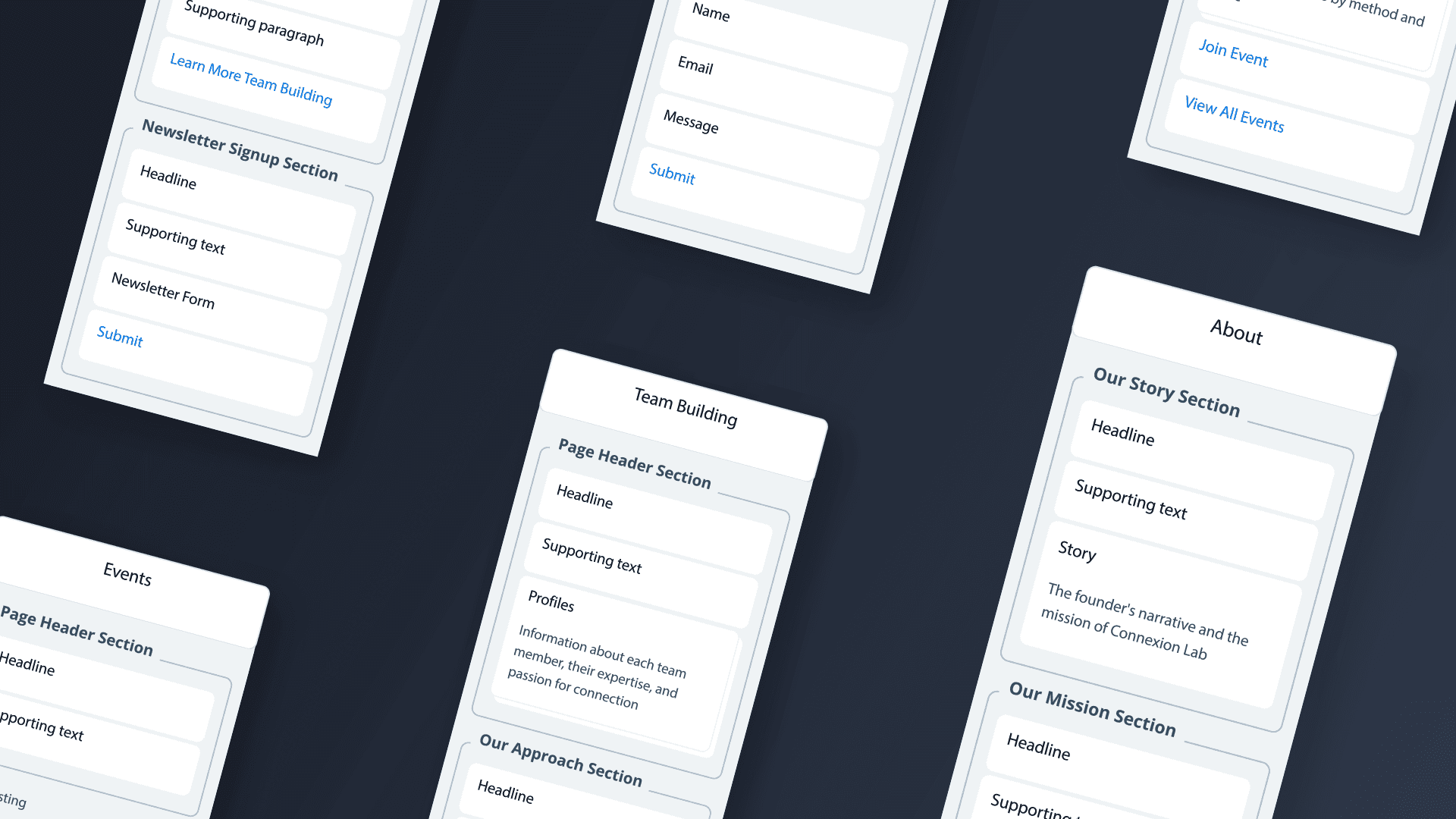Design to live faster with Framer
Imagine you're the mastermind behind a bustling restaurant.
Before the savory dishes hit the plates, an essential task is creating the menu.
Much like this culinary ritual, building a successful website begins with a thoughtful approach to information architecture – the digital menu that guides users online.
1. Content Prioritization and Emphasis on Website Design:
Just as a chef carefully selects the star dishes for their menu, establishing an information architecture helps you focus on the core elements of your website design.
Information architecture (IA) is the structural design of shared information environments. This stage aims to help people find and work with information efficiently and effectively.
Informational architecture also ensures that your most relevant content enjoys the spotlight, enhancing the user experience.
2. Consistent Branding in Website Design:
Much like a restaurant menu reflects the essence of the culinary experience, your website's structure should harmonize with your brand's message and visual identity.
Like a well-designed menu, consistency in branding elements ensures a cohesive and memorable user experience.
3. Content Gaps and Redundancies in Information Architecture
Much like a chef identifying missing ingredients or eliminating redundant elements in a recipe.
A bird's eye view of your content structure in information architecture uncovers gaps or duplications.
Addressing these issues in your information architecture ensures a streamlined and comprehensive website design, enhancing the user experience.
4. User Journeys and Paths for User Experience
Imagine crafting a menu that guides diners from appetizers to desserts seamlessly.
Similarly, information architecture helps map out user journeys through your website design.
This ensures visitors navigate from one section to another effortlessly, creating a delightful digital dining experience.
5. Scalability and Future Growth in Website Design:
As a seasoned chef plans for future menu additions, your information architecture for website design must accommodate your website's growth.
With a big-picture perspective, you can introduce relevant content or features without disrupting the overall structure, benefiting the user experience.
6. Cross-Platform Compatibility for User Experience:
Taking this into account isn't that crucial, but you should consider it as part of your plan.
Think about serving your signature dishes to diners of all preferences and dietary restrictions.
Through a comprehensive information architecture approach, websites can be designed to function across various device types and screen sizes, ensuring a good user experience.
7. Content Delivery Strategy for Information Architecture:
Much like a chef decides which dishes to showcase prominently, your information architecture defines how content is delivered in your website design.
It determines what appears on the "homepage" of your digital menu, in the "navigation," or through features like search and filters, all contributing to a tailored user experience.
8. Content Ownership and Maintenance in Website Design:
In the kitchen, roles are defined to ensure smooth operations.
Similarly, a broader view of your content structure in information architecture clarifies ownership and maintenance responsibilities within your organization.
This establishes clear workflows and guidelines that streamline website design and enhance user experience.
9. User Feedback Integration for User Experience:
Just as a chef values feedback from diners to refine recipes.
User feedback mechanisms are imperative to the success of your website design.
By integrating them into your information architecture early in the design process, you can gain valuable insights that shape your website's evolution and meet users' expectations.
10. Compliance and Legal Considerations in Information Architecture
Examining your content from a holistic perspective in information architecture is crucial.
This ensures that your website design adheres to legal requirements, including accessibility standards, privacy policies, and copyright regulations.
These aspects are vital components of a user-centric experience.
Conclusion
By crafting a digital menu through information architecture for your website design, you lay the groundwork for a website that serves its purpose. This website leaves a lasting impression.
Just as a thoughtfully designed restaurant menu enhances the dining experience, a well-structured website design ensures an engaging and seamless journey for your online visitors.
Let your information architecture be the guiding star of your digital culinary adventure. This will create a feast for the digital world's senses and optimize website design and user experience.
You can also use these best tools to make content outlining much easier.
